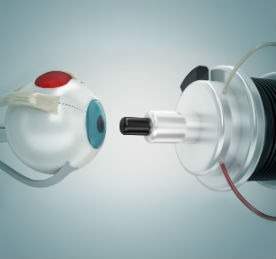
They may not yet be the ‘new normal’ but combination products – devices combined with a drug or biologic – are most definitely at the forefront of the next generation of medical and drug delivery devices.
Whether it is biologically or drug-coated implants or stents, surgical meshes with antibiotic coatings or biological gels (to name but a few advances) this new technology is revolutionising the device arena.
The US Food and Drug Administration (FDA) defines combination products as follows:
- A product comprised of two or more regulated components; for example, a drug / device, biologic / device, drug / biologic or drug / device / biologic that are physically, chemically or otherwise combined or mixed and produced as a single entity;
- Two or more separate products packaged together in a single package or as a unit and comprised of drug and device products, device and biological products, or biological and drug products;
- A drug, device or biological product packaged separately that, according to its investigational plan or proposed labelling, is intended for use only with an approved individually specified drug, device or biological product where both are required to achieve the intended use, indication or effect and whereupon approval of the proposed product the labelling of the approved product would need to be changed; for example, to reflect a change in intended use, dosage form, strength, route of administration, or significant change in dose; or
- Any investigational drug, device, or biological product packaged separately that according to its proposed labelling is for use only with another individually specified investigational drug, device or biological product where both are required to achieve the intended use, indication or effect.
Development challenges
But the development of such cutting-edge devices brings with it new challenges around the technologies and protocols that need to be in place behind and during the manufacturing process.
"The thing we often find is clients overlooking the end-to-end complexity of the process and so overlooking issues such as logistics; it is not just the manufacturing or making of the product," argues Colin Toombs, managing consultant at PA Consulting and head of its process development service. "You need, for example, to make sure that everything is clean or sterile before it comes into the manufacturing area. So there is the whole logistics side to consider, as well as the manufacturing process, and the end-of-the-line quality control.
"Clients will also often assume they have to make the leap straight away into automated manufacturing when they need to ensure sterility around the manufacture of the product, but that is not always the case. Especially if you have not yet got to market, automating your production is going to be quite capital intensive as well as time-consuming because it is likely that you are going to need bespoke equipment, which can all delay you getting to market.
"So it may be better to have a manual or semi-automated manufacturing process for the early clinical trials and then think about making that call about what level of automation you are going to require. One client we worked with had a very complicated way of manufacturing its product. but it was not going to give them a sterile product at the end of the process. In fact what they did much more easily, at least for the early production, was to make it manually," Toombs adds.
"You also need to think about how you are going to look after the handling of the biologic. Most companies will provide the device and the process and then get the biologic from a separate supplier. The supplier will often make it up as a solution and then freeze-dry and store the product. You then need to ensure that after you reconstitute the biologic to use in manufacturing that you re-dry it to make sure you are getting rid of the moisture and getting it back to a stable form.
"Biologics can go through quite a few different processes before going into the distribution chain and the start of the packaged shelf life. Often, therefore, the clock will be ticking away before you even begin marketing your product. So it is important to understand the different phases of the biologic that you are putting into your product."
Uncharted territory
Part of the problem is the simple fact that combination products and biologics are such new areas; if you’re not careful, the whole device development process can become a journey into uncharted territory with the blind ending up leading the blind.
"In many respects biologics is closer to life sciences than pharmaceuticals. It tends also to be a combination of companies as well as a combination product. So you will often have a device company in partnership with a biologic company but neither company will have the combined experience to know what the issues are with the development work," explains Toombs.
"Another issue can be around printing, labelling or applying the biologic as a coating. Often manufacturers will want to use inkjet printing technology for printing and labelling or coating processes. But then you also have to get the equipment in place and be able to work in an aseptic environment, so it can be quite complex because there are so many things that have to be looked at.
"With packaging, too, the primary packaging has to be put in place within the aseptic zone, so there will need to be planning and thought around your packaging requirements and shelf life issues. It might be issues such as moisture permeation or whether you need an oxygen scavenger in place. You can have several barriers before the primary packaging and then your labelling may have to go on to the secondary packaging; and it is normally the case that you have to separate the two," he says.
Sterile manufacturing
Similarly, there can often be confusion about what is the best aseptic manufacturing technology to use.
"There are restricted access barrier systems, which have been around now for seven or eight years, or rigid wall isolators, which are even older. But a lot of the time now organisations are preferring flexible wall isolators and advanced aseptic processing. So it is easy to get confused about what these mean and what is the right one to pick, what is going to be most suited to your product or even just to your level of investment," says Toombs.
"There is also a balance to be had between how long you sterilise and how long you allow the gas to purge before manufacturing. The longer you wait for the sterilant to work the less time you have for manufacturing. You need to get the right balance of batch size to sterilisation time," he adds.
"What can be a good idea is to create a process map, going right back to the start of your process. You map all the parts right through the manufacturing process, including how you get into the sterile manufacturing environment, the handling process, a machine map and what are all the processes going to be from end to end.
"Then you look at your risk management and mitigation, what sort of clean conditions you need, how you handle your biologic to ensure it is not vulnerable or degrades during the manufacturing process and so on. It may sound obvious but you need to make sure the biologic is still working when it comes off the production line. Quality control at the end of the process can sometimes be something that gets overlooked."
Future advancements
In future, we are likely to see more developments around bespoke robotic machinery, flexible liquid handling techniques and, simply, the development of technology more suited to operating in an aseptic environment, Toombs argues.
"Combination products are high capital investment, so having configurable automation that can be applied to a specific manufacturing process is going to become more attractive. I can see a situation where more and more bespoke equipment becomes modularised or where modular platforms are being developed, or where a standard platform can be applied to that area."
Combination products: things to consider
- How you are going to manage the manufacturing process end-to-end, including the logistics of ensuring goods are clean or sterile before they even come into the manufacturing area.
- Whether manual or semi-automated processes may be a viable alternative to expensive automated manufacturing, especially during the early, pre-market days.
- How the biologic will be handled, made up, stored and reconstituted and the different phases of the biologic that you are putting into your product.
- Printing, labelling and coating techniques, including the role of both primary and secondary packaging, and how equipment is going to operate in an aseptic environment.
Creating a process map outlining your process journey, including creation and maintenance of a sterile manufacturing environment, handling and machines, risk management and mitigation.






